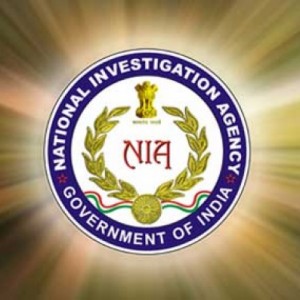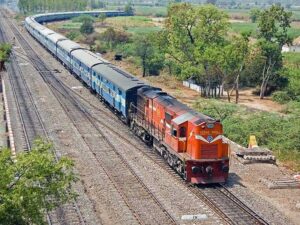Minister of Railways, Govt. of India Shri Suresh Prabhu concludes his three day visit to Washington DC, USA

The Union Minister for Railways, Shri Suresh Prabhakar Prabhu meeting the US Secretary of Transportation, Mr. Anthony Foxx, in Washington, DC on January 15, 2016.
Speaking at the World Bank Conference Plenary Session on “Transport and Cities: Key Drivers for Meeting Climate Goals”, the Indian Railway Minister Shri Suresh Prabhu highlighted the vital role of the Indian railways in providing low cost sustainable transportation. The Indian Railways has embarked on transforming its energy mix by using renewal energy sources like solar and wind energy, and is undertaking energy audits to improve efficiency to meet its sustainability targets. The Minister underlined that any sustainable transport solution has to be economically viable, socially equitable and environment friendly. He advocated for a multi-model transportation policy to create an integrated transportation ecosystem where rail and road networks complement each other.
In his high level meetings with the World Bank and IFC officials, the Indian Railway Minister Shri Suresh Prabhu discussed the Indian Railways’ efforts to expand, modernize, decentralize decision making, improve efficiency, meet customer expectations, move to clean energy, introduce greater transparency through e-tendering and change attitudes and mind sets. He made a presentation on the railway sector to the senior leadership of the World Bank Group separately on the new initiatives of his Ministry and how the World Bank could partner with Indian railways. Both the World Bank and IFC are working closely with Indian Railways to help it achieve its formidable targets.
The Indian Railway Minister met the US Secretary of Transportation Mr. Anthony Foxx to discuss enhanced bilateral engagement in the transportation sector flowing from the Memorandum of Cooperation signed in April 2015 during the visit of Secretary Foxx to India. Shri Suresh Prabhu noted the immense possibilities for knowledge sharing, technology tie-ups and business cooperation between the two countries in the transportation sector. Both sides agreed to promote cooperation in a number of areas including railway safety and capacity building, through joint workshops and exchange of visits.
In his meeting with the Chairman and President of the US EXIM Bank Mr. Fred P. Hochberg, Shri Suresh Prabhu discussed the possibility of structuring an India specific financing model to take advantage of upcoming investment and business opportunities in India’s rail sector. Both sides agreed to work on a road show of potential long-term investors having interest in India’s infrastructure sector.
Shri Suresh Prabhu also met with the President and CEO of the Overseas Private Investment Corporation (OPIC) Ms. Elizabeth L. Littlefield to explore the possibility of OPIC’s financing for the Indian Railways.
At a public event organized by the Carnegie Endowment for International Peace, the Indian Railway Minister delivered a talk on “Modernizing India’s Transportation Infrastructure for Sustained Growth: Challenges and Prospects”. He addressed a roundtable discussion organized by the American Enterprise Institute on “India’s Drive for Development”. In addition, he met a number of US businesses, think tanks, academics and Indian community leaders.
The US India Business Council organized a roundtable discussion with the Indian Railway Minister Shri Suresh Prabhu, focusing on investment opportunities for US businesses in India’s railway sector. The Minister informed that the Indian Railways has prepared a draft regulatory framework for transparency in fare and freight pricing, supporting public private partnerships and ensuring efficiency parameters in India’s railway sector. This draft is available on the website for public comment. During the interaction, US companies offered their capabilities and expertise in sectors such as IT, manufacturing, research, finance, station development, etc.
During these interactions, the Indian Railway Minister highlighted the Indian Railway’s plans to invest US $ 142 billion in the coming five years and hope to double this investment figure in the next five-year cycle. Since the last Railway Budget of 2015, the Indian Railway has implemented 110 reform measures, fulfilling all the announcements made in the budget. The Indian Railways has permitted 100% private sector investment in most segments of the railway infrastructure such as suburban rail, metro rail, locomotives and rolling stock, manufacturing and maintenance, signalling and electric works and dedicated freight lines.
Shri Suresh Prabhu touched upon various projects which are at different stages of implementation including dedicated freight corridor, high speed train project, doubling/tripling train tracks in heavy traffic zones, modernization of 400 railway stations, technological up-gradation of signal system, instrumentation and other safety measures. He stressed that Indian Railways followed a completely transparent process in awarding the US $ 7 billion contracts to GE and Alstom. He spoke about the huge investments coming from countries like Japan, which is helping India build its first bullet train with a highly concessional loan. Railways is also collaborating with several other countries, including the US. He encouraged US businesses to take advantage of the emerging opportunities.
The Indian Railway Minister had a useful interaction with members of the India Club and 1818 Society of the World Bank with participation of retired senior World Bank and IMF executives who have longstanding experience in working on various developmental projects globally including infrastructure and transportation sectors.
The Indian Railway Minister also interacted with the senior leadership of the World Resource Institute (WRI), during which he discussed the Indian Railways drive to transform its energy mix by promoting the use of clean energy and various initiatives to make railways an eco-friendly organization. He spoke about energy audits, use of LED lights, water recycling and other measures that are not only protecting the environment but also saving the government millions of dollars.
The Indian Railway Minister Shri Suresh Prabhu’s interactions with a wide cross section of stakeholders helped in generating considerable interest in India’s railway sector.








